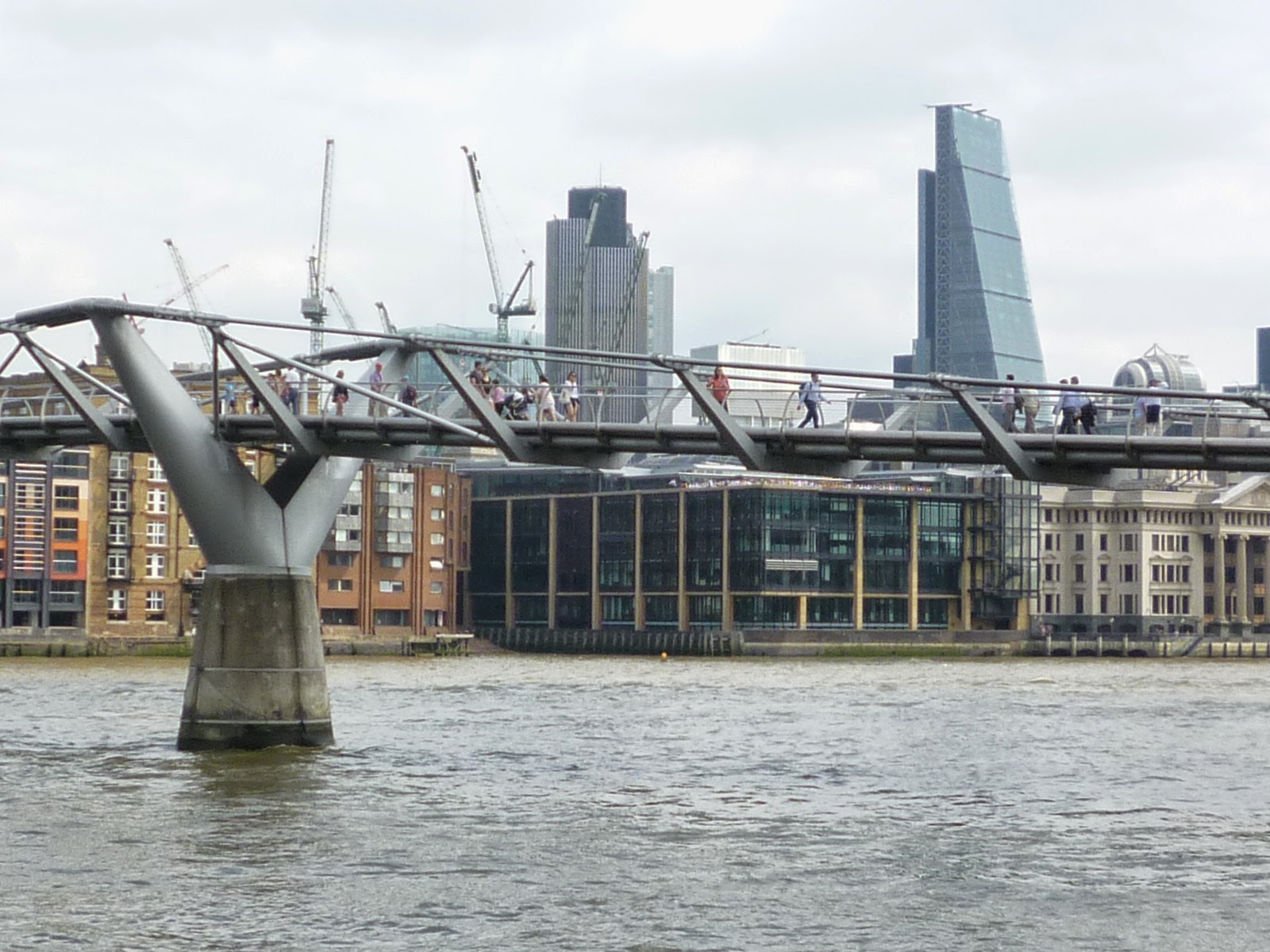Tuesday 24 June 2014
A view from the bridge
Today's Guardian questions the wisdom of Thomas Heatherwick's garden bridge project, which has now been submitted for planning permission.
Though anyone who stands in the way of a project that has Joanna Lumley's support has to think carefully, not least because you may have the gurkhas to contend with, I share the view that the undoubtedly multi-talented Heatherwick is overreaching this time.
The proposed location - South Bank to Temple - is not a bad one (the 1944 Abercrombie plan suggested a bridge here). But does a new bridge need a new design?
The Millennium Bridge opposite Tate Modern does the job well, now that the wobbling has been sorted out, and is as elegant a structure as any that emerged from the boom years of lottery projects - its deck structure is almost unbelievably slender from some angles. The design approach evokes, more evidently than some other Foster projects of recent decades, the pre-peerage Norman Foster's interests in economy of means, and in Buckminster Fuller's associated question 'how much does your building weigh?' - also brought to mind by a BBC documentary yesterday about tents and tent structures, in which Frei Otto (still with us, and entirely lucid, at age 89) reminded us of a recent past where there was a great deal more optimism about the future. Heatherwick's heavyweight, loam-freighted offering, by contrast, has something of the folie de grandeur: more Decline and Fall of the Roman Empire than Tomorrow's World.
There are other places in central London where a new Thames footbridge could usefully be provided - most notably, Nine Elms to Pimlico. Why not dust off those Foster and Arup drawings and build a couple more Millennium Bridges? Like the Georgian house and unlike Mr Gove's schools, if it's a great idea it will bear repetition.
Heatherwick's bridge will offer good views, undoubtedly, but it will block other views that we enjoy already - that's why the pigeon's eye view, as seen in the Guardian, is preferred by the promoters.
The new Blackfriars station where it crosses the river, above, shows what can happen - from points on the south bank of the river, the low-rise nirvana of the City of Westminster to the west is blotted out almost entirely.
This just at a time when those promoting the putative 'skyline commission' for London are suggesting that the open quality of the central London reaches of the Thames should be protected from further encroachment. Large trees in the middle of the river will encroach on it a lot more than a few tall buildings in the backdrop.
But Heatherwick and Lumley have the advantage that the English prefer trees to buildings, even in the heart of their metropolis.
Subscribe to:
Posts (Atom)




